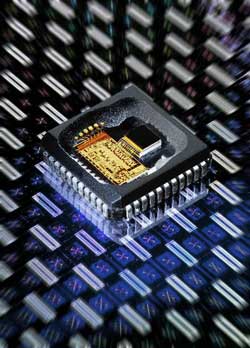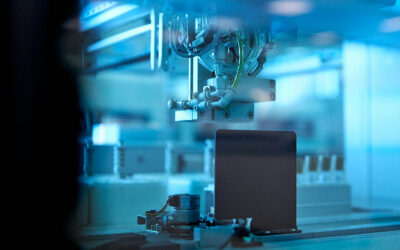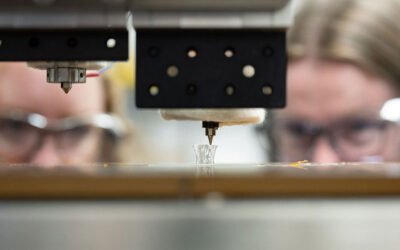The design of micro-electromechanical systems (MEMS) is about to undergo a technological revolution: experts from research institutions and industry are investigating entirely new methods for their development. They are working together in the research project known as “Circuit Diagram-Based Design of MEMS for Applications in Optics and Robotics” – or MEMS2015 for short. This project is funded by the Federal Ministry of Education and Research (BMBF) and coordinated by Robert Bosch GmbH. The aim is to develop the first ever universal design methodology for MEMS to plug the gaps between electronics and mechanics design, manufacturing, and subsequent integration into products.
 MEMS are tiny components that require a minimum of space to measure and electronically process parameters such as acceleration, pressure, distance, temperature, light, or chemical concentrations. With their compact sensor and actuator systems, MEMS can, for instance, be used to ensure that airbags are inflated promptly as a car is involved in a collision, to measure blood pressure or oxygen content in intensive care applications, or to enable digital cameras to eliminate camera shake.
MEMS are tiny components that require a minimum of space to measure and electronically process parameters such as acceleration, pressure, distance, temperature, light, or chemical concentrations. With their compact sensor and actuator systems, MEMS can, for instance, be used to ensure that airbags are inflated promptly as a car is involved in a collision, to measure blood pressure or oxygen content in intensive care applications, or to enable digital cameras to eliminate camera shake.
The researchers involved with MEMS2015 have said that the new development methods for MEMS will allow innovative sensor and actuator systems to be developed – providing robots, for instance, with more effective sight and touch in the future. What is more, the potential market for MEMS stands to increase by up to 50% as a result. Using a type of modular system, the researchers aim to plug the gaps between chip and sensor manufacturing on the one hand and the subsequent integration of the modules into products on the other. This will substantially increase the opportunities for widespread use of MEMS in the professional and security-relevant segments. The new methods will also allow small and medium-sized enterprises to design MEMS and integrate them into their products much more often, as well as in a wider range of configurations than at present.
Perhaps these new development methods for MEMS will pave the way for entirely new solutions in leading-edge optics and robotics applications. This opens up the prospect of the wide-ranging use of micro-mirror arrays, similar to the devices already being used in projectors. This technology allows images to be projected directly onto the retina using special glasses. In robotics, force sensors and profilometers can be developed that analyze surfaces even more accurately than before, or that simulate an extremely precise sense of touch. The project findings are being verified as part of the project on the basis of real MEMS prototypes which, in turn, serve as demonstrators.
The MEMS2015 research project, which has a three-year term and around 3.5 million euros in funding from Germany’s Federal Ministry of Education and Research (BMBF) as part of the German government’s High-Tech Strategy and the ICT 2020 development program, brings together the potential of eight partners from research and industry: Cadence Design Systems GmbH, Carl Zeiss SMT GmbH, Institut für Mikroelektronik- und Mechatronik-Systeme GmbH, Robert Bosch GmbH, the Technical University of Munich, TETRA Gesellschaft für Sensorik, Robotik und Automation mbH, the University of Bremen, and X-FAB Semiconductor Foundries AG. The edacentrum in Hannover is responsible for project management for MEMS2015.

















